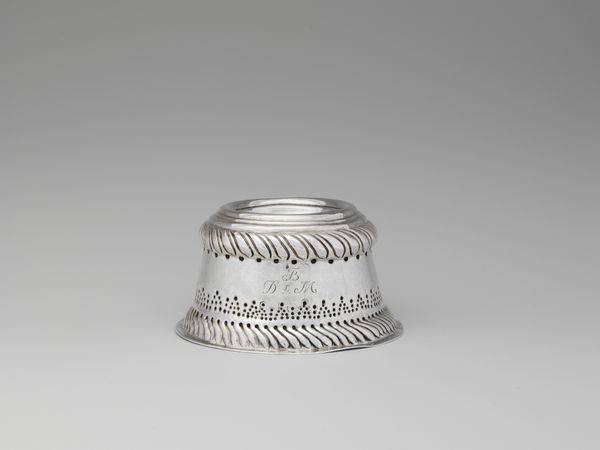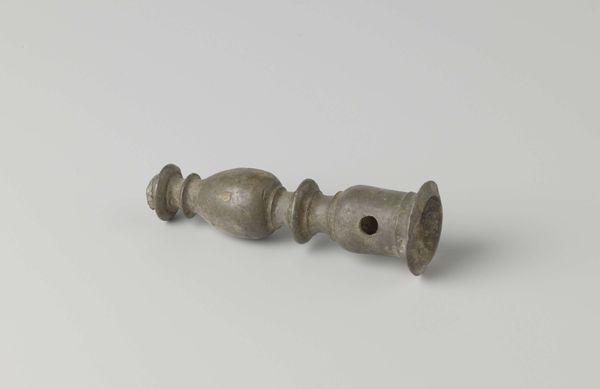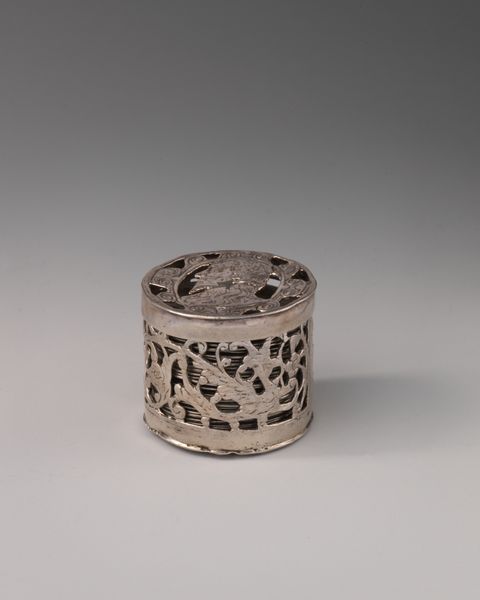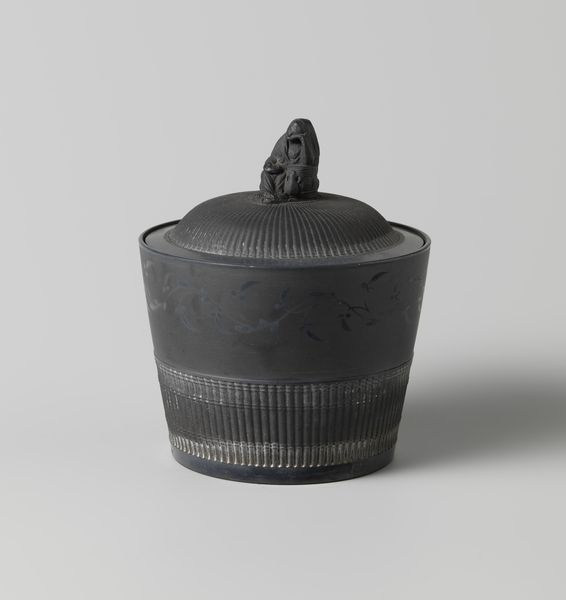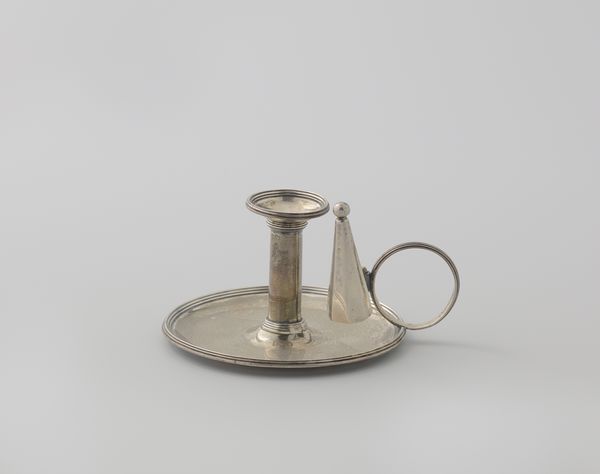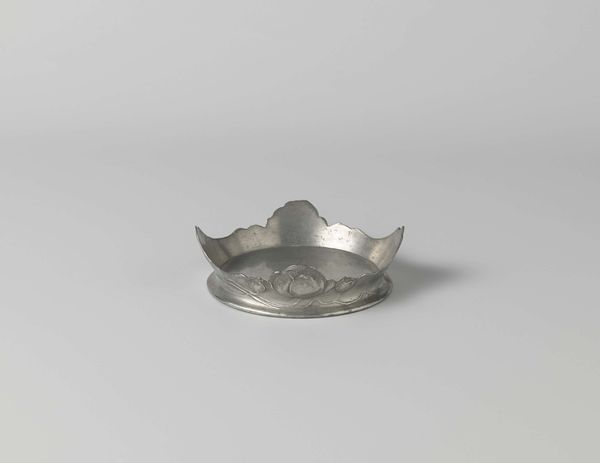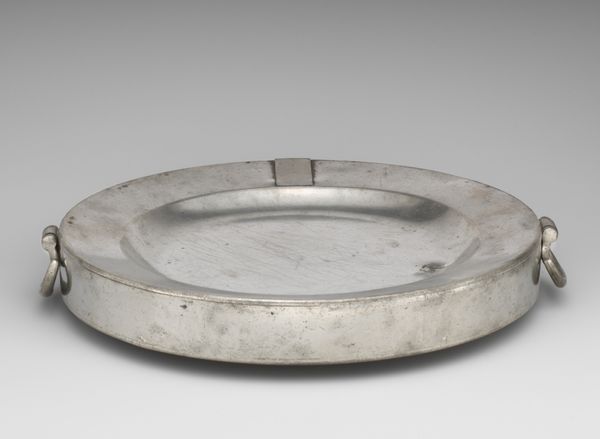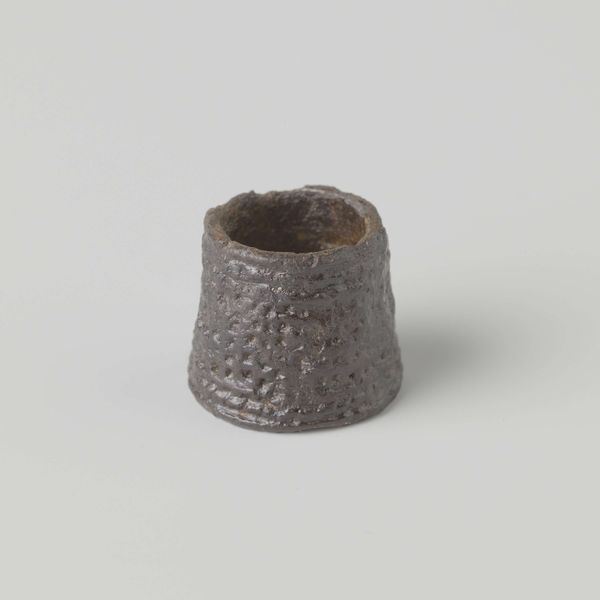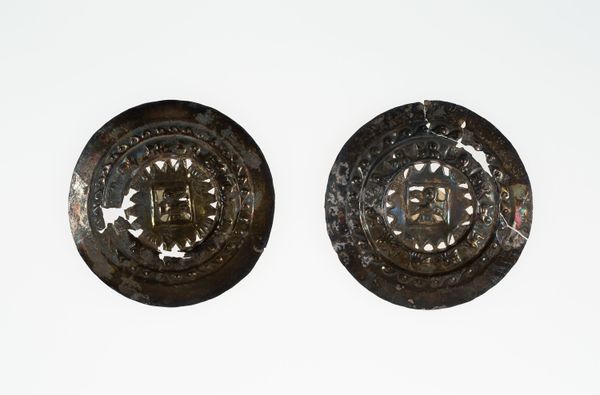
brass, metal, sculpture
#
brass
#
metal
#
sculpture
#
decorative-art
Dimensions: height 8.3 cm, width 20 cm, depth 18 cm, height 2.5 cm, diameter 6.8 cm
Copyright: Rijks Museum: Open Domain
Editor: This decorative-art object, "Onderstel van tin voor kraantjeskan," is crafted from brass and metal; it seems almost like a little throne. The object feels quite opulent, yet also incredibly practical. I’m curious, with your understanding of art history, what kind of social function might this object have fulfilled? Curator: That's a keen observation! These objects, especially crafted from tin and brass, indicate a certain level of social status. Beyond pure function, which is presumably to hold a hot water or tea pot, these "onderstellen" served as signifiers of domestic comfort and bourgeois display. Notice the delicate, repeated patterns. Where do you imagine they might be displayed and who would enjoy them? Editor: Well, given the precious materials and ornate design, this probably wasn't in some servant’s quarters. Perhaps a formal dining room, a parlor… some space for guests? Does the existence of objects like this say anything about the socio-political climate of the time? Curator: Precisely! Think about the late 18th century, a time of growing merchant power. These objects, multiplied across households, reveal the ascent of a new kind of wealth and taste. We can analyze the role decorative art plays in affirming social hierarchies and aspiring to aristocratic aesthetics within the burgeoning middle class. What are your impressions of the state of craft represented here? Editor: The intricate details seem hand-crafted, suggesting an investment in skilled labor and refined production. The holes along the decorative rim suggest air flow to keep a flame lit, I now notice! This really highlights the dedication to craftsmanship in an age before mass production fully took hold. Curator: Absolutely. So, we see not only an object of domestic utility but a reflection of social mobility and the changing landscape of craft production and consumption during a critical point in history. A seemingly humble item illuminates wider political and social contexts. Editor: I hadn't considered that before. It’s amazing how everyday items can tell such a complex story about the society that produced them. Thanks for this fascinating insight!
Comments
No comments
Be the first to comment and join the conversation on the ultimate creative platform.


